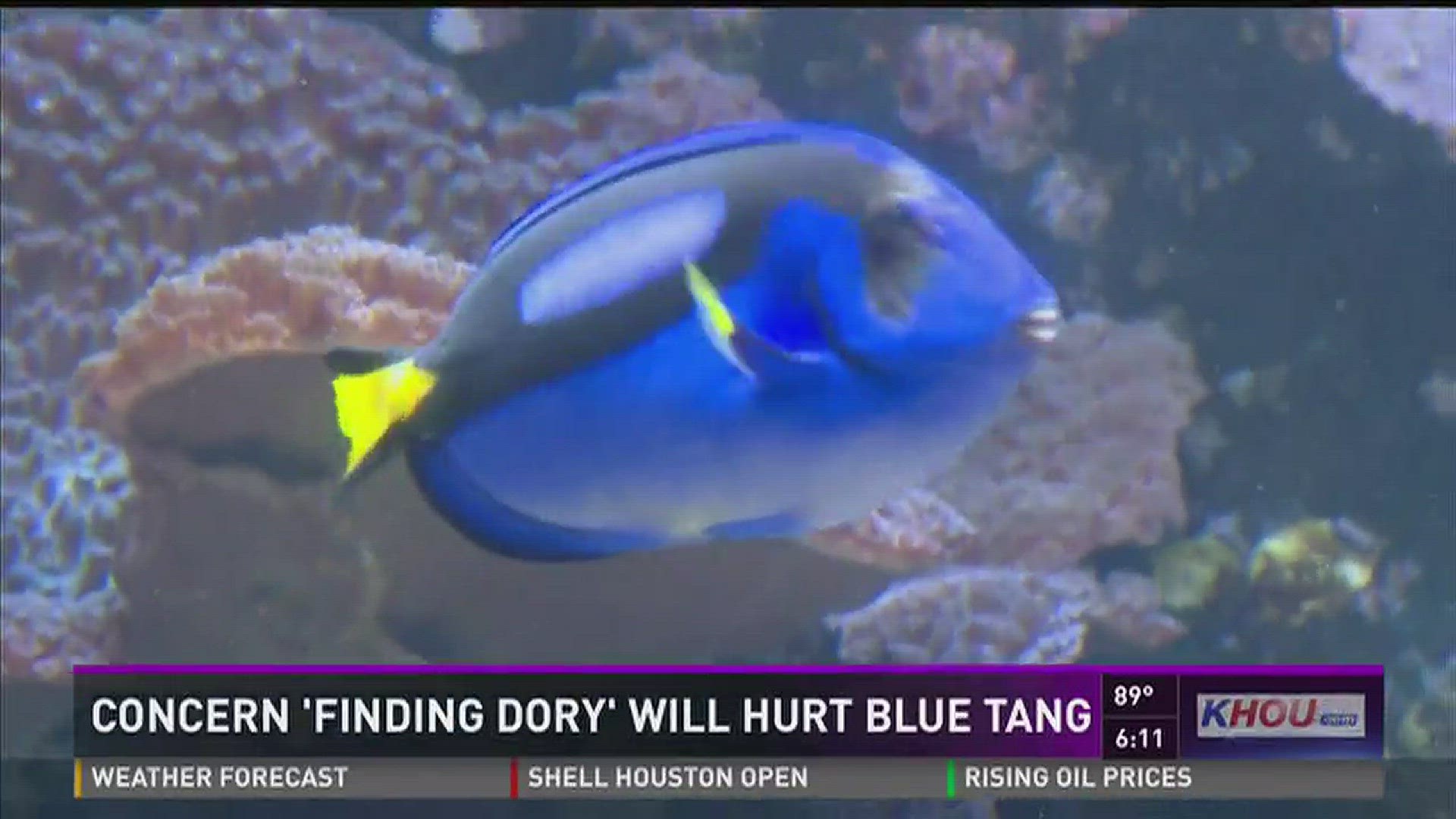There’s a blue fish with a yellow tale that’s starring in a popular Disney Pixar sequel coming to theatres June 17.
If you ask a child, they’ll probably tell you the fish’s name is Dory.
Technically the fish is called a blue tang, but after the new ‘Finding Dory’ movie comes out next week, even more kids will be calling this fish by its cartoon name, and many of them are going to want one of their very own.
At least that’s what happened after ‘Finding Nemo’ was released—clownfish became a hot commodity.
“What we saw after ‘Finding Nemo’ came out was a big rush, particularly to buy ‘nemo.’ We saw about a 30 percent increase in sales and imports (of clownfish),” said Houston Zoo Aquarium Supervisor Mike Concannon.
Dennis Hoang at FJW Aquarium says he sold a ton of clownfish in 2003 when the original movie came out, and expects the same trend to repeat itself with the release of the sequel.
Hoang has about 30 blue tang currently in stock, but he won’t be selling these fish to just anyone. He says a blue tang requires a special kind of care and a well-equipped saltwater tank to stay alive.
“Definitely not a beginner fish.” Hoang said. “You have to have a tank that’s a little more mature, and make sure you have all the ability to keep the fish.”
So it’s not exactly easy, and it isn’t cheap either.
“The investment that you’re going to keep an animal like the blue tang, or the hippo tang, healthy over its lifetime would probably approach $1,000 just for the setup,”Concannon said.
Dories also may be harder to find than Nemos, because unlike clownfish, blue tang cannot be bred in captivity, which means every one sold is taken from the wild, either as a young fish or as an egg.
That’s a concern for conservationists who believe that a rapid sale of blue tang could hurt the ecosystem.
All things to think about before trying to create a Disney dream ocean of your own.

